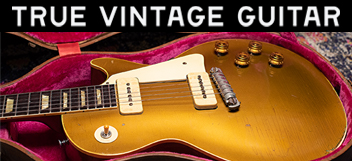Patek
Active member
- Joined
- Dec 4, 2015
- Messages
- 419
Brazilian is a very significant material of an original Burst DNA. Since each guitar is different, and BRW is only one component, it's not a valid argument whether or not the masses can positively identify every single guitar by fretboard wood. I doubt most people could distinguish between a lot of different tone woods. Doesn't mean jack. The frets are seated in this wood and it makes up a significant percentage of the neck structure, so it also is a factor on neck rigidity.
As Paul Reed Smith would ask, if the fretboard was made of rubber would it matter? Would it sound different? Yes. So we've established it matters. Now it's a question of how much.
It's these small differences that distinguish the "really good" guitars from "great" guitars. Sure, it is quite possible and practical to make excellent guitars from many different materials. But if you want an accurate Les Paul the fretboard is made from Brazilian.
agree with that.
That would get you closer to a burst, if you could compare one straight out of the store in 59 (which we can’t). If you capture the feel and sound of a burst today you will need to wait at least 60 years (or more than 100 years if you factor in old growth), and it will be close to a snapshot of a burst from today.
Wood is wood but old wood is old wood.
Unless you use old growth woods now (with +60 years). But what will never be captured no matter what you do even if you get a Bartlett accurate replica with old growth, is the 60 years of bonding; the neck and the top will have been bonded together like glass for so long now that there is a certain quality to that. I know with my 53 you can actually tell that the woods on this baby have been married together in a way that makes it resonate like running your finger over a crystal wine glass making a that sweet chime. You can’t build that part, I wouldn’t think...
for this conversation, we are comparing Indian vs Bolivian, both of which are incorrect woods to recreate a burst accurately. Considering that they are both wrong, I don’t think it makes much of a difference between the 2 (to me personally, or I wouldn’t have purchased) and a great piece of either wood (dark, light, resonant, etc) will yield a good result making for a great LP.




![URL]](http://[URL]https://i.imgur.com/owpcCXu.jpg[/URL])